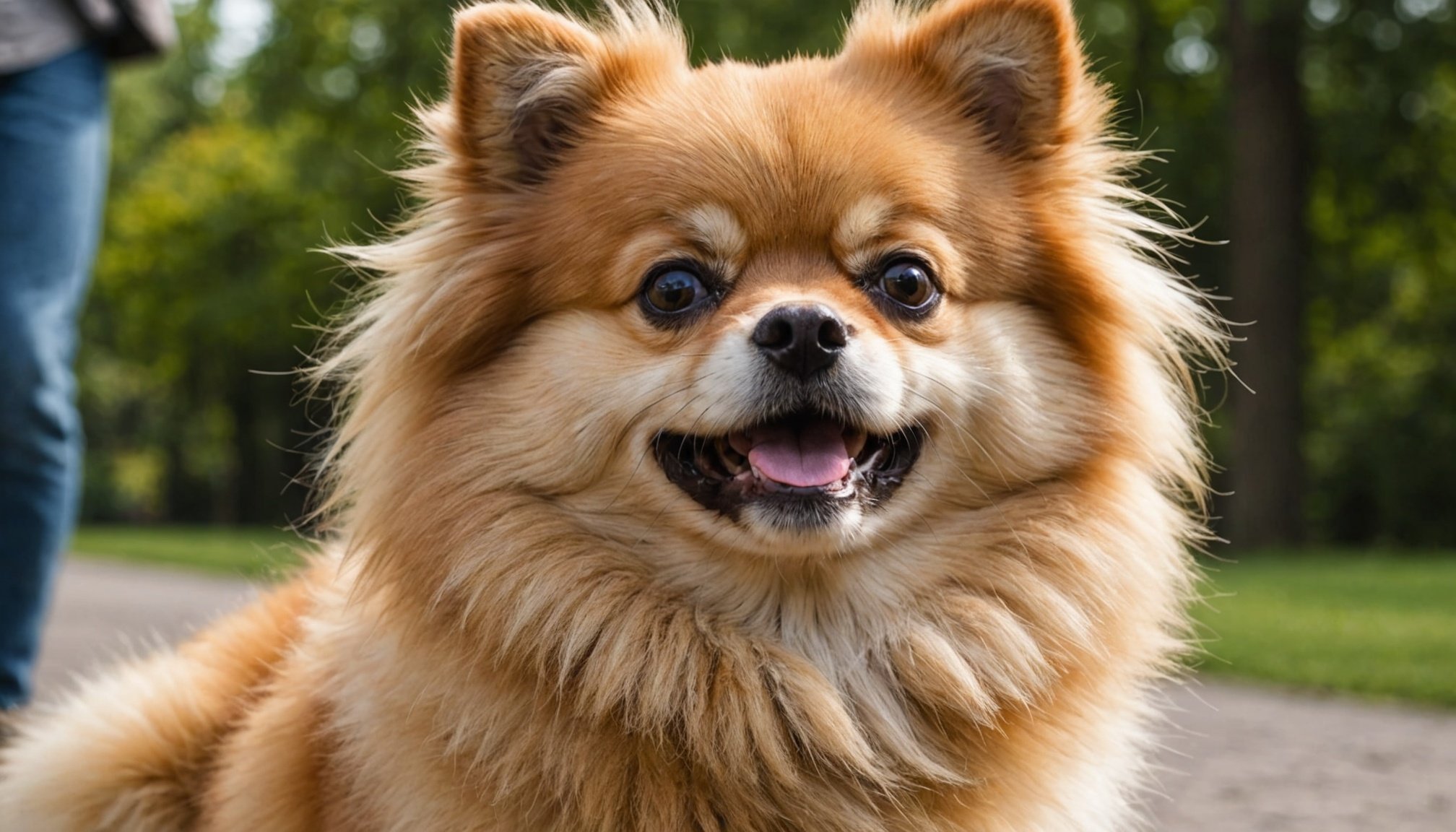Understanding Pomeranian Barking Behavior
To comprehend Pomeranian barking behavior, it’s essential to explore their innate traits. Pomeranians are renowned for their lively and spirited nature. Consequently, barking is a significant part of their means of dog communication. These small yet confident dogs often use barking to express excitement, alertness, or to demand attention. Understanding these signals can help you interpret their needs more effectively.
Various triggers can prompt excessive barking when guests arrive. For many Pomeranians, unfamiliar faces can be perceived as potential threats. They might bark to assert dominance or protect their territory. Additionally, the heightened activity levels and changes in environment can lead to increased barking as a response to stress or excitement.
A lire aussi : Mastering Sledding: Key Steps for Training Your Siberian Husky Effectively
Recognising the underlying reasons for barking is crucial. It enables you to approach the situation with empathy, seeing the world from your dog’s perspective. What might be a nuisance to you could be their sincere effort to communicate concerns or preferences.
To manage this behavior, consider these approaches:
A lire aussi : Essential Tips to Curb Separation Anxiety in Boxers Left Alone for Extended Periods
- Train the dog to associate guests with positive experiences.
- Provide consistent commands to reinforce desired behavior.
- Address any anxiety that may be contributing to the barking.
An understanding of the Pomeranian’s motivations fosters a balanced and harmonious relationship.
Effective Training Methods
Training a dog requires consistent and effective techniques to ensure success. Consistency plays a crucial role in establishing reliable behaviours and responses. By maintaining consistency in commands, cues, and rewards, dogs learn the expected behaviour more rapidly, making training more effective.
Positive reinforcement is a popular dog training technique that focuses on rewarding desired behaviours. This approach reduces unwanted behaviours, such as excessive barking, by encouraging behaviours that are rewarded positively. Rewards can include treats, praise, or playtime, reinforcing the idea that good behaviour results in positive outcomes.
Implementing training strategies like using clear and simple commands can enhance a dog’s learning experience. Examples of effective commands include “sit,” “stay,” and “come.” These commands form the foundation of good canine manners and are essential cues to master.
Positive reinforcement not only builds trust between the dog and trainer but also creates a more enjoyable training atmosphere. By applying this method consistently, dogs become more attentive and learn faster. Introducing variety in rewards keeps the dog interested and eager to learn, making training sessions successful.
Incorporating these elements into your training routine ensures that the dog develops good habits and adapts well to different situations.
Gentle Techniques for Socialization
When socializing Pomeranians, it’s crucial to take baby steps. Begin by introducing them to one new element at a time, ensuring that these introductions occur in a controlled and calm environment. It is essential that the atmosphere is inviting and not overwhelming for your furry companion.
Start with gradual exposure to people. Invite one or two guests over in a space that your Pomeranian feels comfortable. Allow them to observe from a distance initially, then gradually decrease this distance as they show curiosity and comfort. Encourage interactions with guests by gently offering treats to your Pomeranian, associating these experiences with something positive and delightful.
The cornerstone of this process is creating positive experiences. Using treats and vocal praise when your Pomeranian behaves well can encourage obedient behaviour. You can also provide toys or play games during these socialization moments to help your Pomeranian understand that being around new people is an enjoyable experience.
Patience plays a pivotal role in the socialization process. Every Pomeranian is different, and adapting at their own pace is key. Be encouraging and avoid rushing; positive experiences should accumulate naturally. Acknowledging their bravery with gentle praises helps build their confidence in social settings.
Safe Distractions During Guest Arrivals
When welcoming guests, finding effective distractions for dogs can prevent the chaos often caused by excited barking. Begin by preparing toys specifically designed for calming your Pomeranian. Items like puzzle toys or chew treats can serve as ideal toys for barking, keeping your dog’s mouth occupied and attention diverted.
Creating a ‘safe space’ within your home is another strategy to employ. This doesn’t just offer your dog a retreat when they feel overwhelmed, but also establishes a personal territory where they can feel at ease. Choose a quiet corner and equip it with comfortable bedding and familiar scents, ensuring it becomes a refuge rather than a punishment.
Calming techniques can work wonders too. Consider basic commands like ‘sit’ or ‘stay’ during guest arrivals, coupled with positive reinforcement. This helps redirect their focus, promoting good behaviour through reward. Consistent practice of these techniques can improve your dog’s response, lowering noise levels when guests arrive.
Lastly, exercise before guest arrivals can also be a useful approach. A tired dog is more likely to relax, so a brisk walk or a simple game of fetch beforehand may do the trick. Implementing these suggestions can greatly enhance an enjoyable atmosphere for both guests and your furry friend.
Reinforcement and Consistency Post-Training
Ensuring that your dog’s training remains effective over time requires reinforcement strategies and ongoing commitment to maintaining dog behavior. Ongoing training is not just beneficial but essential.
After initial training, continuous reinforcement helps solidify good habits and prevent regression. By integrating reinforcement strategies into your dog’s daily routine, you can make training a seamless part of life. Simple activities such as rewarding good behavior with treats or verbal praise maintain your dog’s acquired skills.
Keeping track of progress is crucial for achieving consistency. Regularly assessing your dog’s behavior allows you to adjust techniques as necessary, ensuring they remain effective. If certain strategies seem to lose their potency, you might need to introduce new stimuli or rewards to keep your dog engaged and motivated.
Here are a few tips to incorporate reinforcement strategies:
- Set specific goals: Clearly define what behaviors you wish to reinforce.
- Use varied rewards: Keep your dog interested with different types of rewards.
- Practice regularly: Make reinforcement a natural part of daily activities without overwhelming your dog.
By prioritising these strategies, ongoing training becomes a rewarding experience for both you and your dog. It builds a strong foundation for a well-behaved companion.
Testimonials and Case Studies
Understanding the journey of Pomeranian owners in dog training can offer valuable insights. Through these personal accounts, we delve into real-life success stories that highlight the effectiveness of various training techniques.
In one owner experience, a Pomeranian named Bella was initially termed as “unyielding” when it came to leash training. However, through consistent case studies on dog training, Bella’s owner discovered that positive reinforcement was key. By rewarding desired behaviour with her favourite treats, Bella learned to associate walking on the leash calmly with positive experiences. The owner said, “Patience and positivity turned our walks into a delight.”
Another noteworthy case involved Max, a hyperactive Pomeranian. His journey adds to the testimonials by showing how structured routines and engaging in interactive play helped manage his energy levels. Max’s owner advised on setting regular exercise schedules and using puzzle toys, which not only focused his energies but also enriched their bond.
Despite the challenges faced during these processes, such as occasional setbacks, these case studies on dog training reflect resilience and dedication. Overcoming them often involved tailoring methods to fit each dog’s unique personality, ensuring a nurturing yet effective approach to training.










